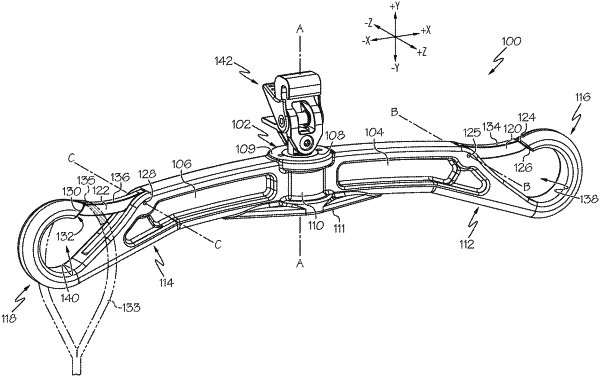| CPC B66C 1/16 (2013.01) [A61G 7/1061 (2013.01)] | 19 Claims |

|
1. A sling bar, comprising:
a first bar portion that extends in a first longitudinal direction, the first bar portion defining a first latch slot and a first spring aperture;
a first sling attachment portion positioned at a first end of the first bar portion, the first sling attachment portion extending from a lower part of the first bar portion to define a first receiving aperture, and the first sling attachment portion defining a first stop surface having a first lock aperture defined within the first stop surface;
a first retention latch pivotally coupled to an upper part of the first bar portion and defining a first engagement face, the first engagement face restraining the first retention latch to pivot between an open position, where the first retention latch is positionable against the first bar portion within the first latch slot, and a closed position, where the first engagement face interfaces with the first stop surface of the first sling attachment portion, the first retention latch comprising a first lock protrusion protruding from the first engagement face, the first retention latch comprising an outer curved surface matching a shape of the first bar portion at a first end of the outer curved surface and a shape of the first retention latch at a second end of the outer curved surface, the outer curved surface curving concavely between the first end and the second end toward the first receiving aperture to provide a consistent transition from an upper surface of the first sling attachment portion to the outer curved surface of the first retention latch; and
a first spring positioned within the first spring aperture to force the first retention latch toward the closed position, wherein the first lock aperture is shaped to receive the first lock protrusion to maintain the first retention latch in the closed position.
|